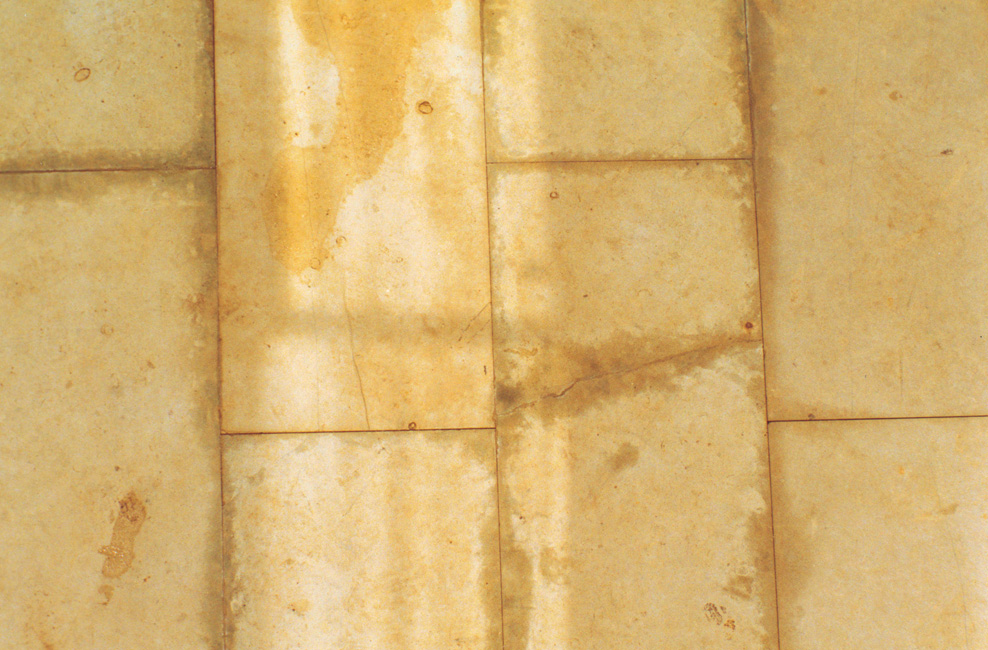The Australian Stone Advisory Association (ASAA) was launched in 2004. In the ensuing 10 years we have received more questions about stone that has stained during or after the laying process than any other single phenomenon. In some instances, it appears that the chosen product is simply too thin. Ironically, it appears that many specifiers, stone merchants, installers and consumers rarely question the people who should know more about this issue than anyone else – the adhesive and sealer manufacturers.
In simple terms, any merchant engaged in the sale of natural stone needs to have a thorough understanding of the stone in question. New Australian consumer law dictates that the seller should be able to warranty the performance of the product. Resellers need to be able to advise prospective clients about approved installation practices, including choice of an appropriate adhesive or sealer (if required).
The installer needs to be informed about the best way to proceed, and in an ideal world, all parties should be clear about their expectations before a tile is laid.
The vast majority of our leading adhesive manufacturers create products which are specifically designed to lay moisture sensitive natural stones. Some of them have compiled extensive resources of information pertaining to specific types of stone that are known to be moisture sensitive. All of them will test a particular stone, and armed with the right information about substrate preparation, they will provide written recommendations regarding adhesive selection.
The same type of pre-installation advice can be provided by companies that market sealers.
Of course the possibility remains that one batch of stone may be different to previous batches. It is after all a natural material and stone quarried from one face may perform differently to stone extracted from a different area. That provides an even greater incentive to the reseller to understand the nature of the product he is marketing, so that he has a basic benchmark, against which he can measure the stone’s performance.
A high percentage of the problems reported to ASAA relate to projects where several hundred metres of stone have been installed. With a little bit of re-search the vast majority of these problems could easily have been averted.
The Latin caveat emptor (‘let the buyer beware’) may still apply, but today, the legal onus is placed firmly on the seller to understand his merchandise.
Our market is awash with slim stone tiles produced in large formats, e.g. 400 x 800mm. Some of these mate-rials function well, some do not. The tendency to import cheap stone products simply means that we are selling inferior materials, bypassing tried and tested products of a high quality.
Which type of adhesive works
I mentioned the importance of correct substrate preparation. Moisture transference from the substrate has been known to dissolve existing mate-rials within the stone, like iron oxides and organic deposits, which may cause discolouration to the edges or face of the stone. Suitable substrate preparation is a must. Natural stones like marble, granite, slate and bluestone consist of combinations of mate-rials and chemicals that may cause the stone to re-act in an unusual manner when it becomes wet during the laying process. That is why it makes sense to test the suitability of materials before installation commences.
Adhesive manufacturers approach the problem in one of two ways. Given that staining usually occurs when soluble substances are transferred to the surface by water on the back of the stone, it is important to either remove water from the mix or to substantially reduce the amount of time that the stone is in contact with water.
The first option involves use of an epoxy (water-free adhesive) which greatly reduces the potential for moisture penetration and subsequent staining.
The second option relies on use of a quick hardening, fast-setting cementitious adhesive which rapidly removes water due to faster hydration processes. One and two component options are available.
The first option is generally more expensive. Both systems are tried and tested in a variety of situations with various materials. The prime question is which system should be used with a specific stone in a given environment. If in doubt, contact your adhesive supplier, let them test the stone and make specific recommendations.
In many instances the building owner or occupier will reasonably expect the stone to last for a period that coincides with the life of the structure. With a little research, care and attention this goal can be achieved.
Adhesive technology is advancing in leaps and bounds, products are available which actually lock water within the mortar mix. While the vast majority of stone merchants do not get involved directly in the installation process, this may not absolve them from knowing what it takes to correctly install the product they are selling in a given environment.

